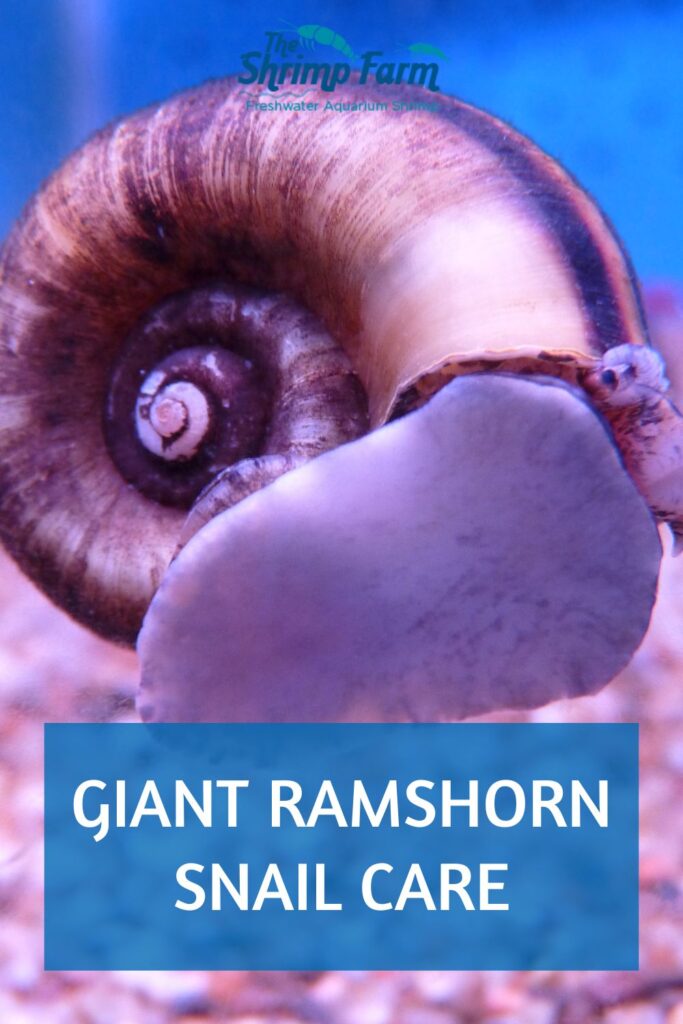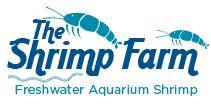Giant ramshorn snail | Marisa cornuarietis care & info
Looking for a snail species that can cohabit with your (dwarf) shrimp? Let us introduce you to Marisa cornuarieties, a large Central and South American native better known as the giant ramshorn snail. Although this species doesn't play nice with other snails, nor with aquarium plants, it should leave your shrimp alone.
Keep reading for everything you need to know about giant ramshorn snails and their care in the home aquarium!
| Scientific name | Marisa cornuarietis |
| Common name | Giant ramshorn snail, Colombian giant ramshorn snail, Columbian giant ramshorn snail, Colombian ramshorn apple snail |
| Difficulty level | Easy |
| Origin | Central America and northern South America |
Table of Contents
Giant ramshorn snail appearance & natural habitat
Appearance
Before we start, let's make one thing clear: despite its name and appearance, the giant ramshorn snail isn't actually a member of the genus Planorbarius, the ramshorn snails. It looks similar, but it's a member of the genus Marisa, which forms part of the apple snail family. Confusing, which is why we like to use species' scientific names here at The Shrimp Farm!
This is a relatively large snail species, with a shell diameter of up to 2.3". It can be told apart from true ramshorns by its relatively light, sandy coloration, as well as the darker brown stripe that runs down the center of its shell.
Habitat
The giant ramshorn snail is naturally found in Central and South America, hence its common name of "Colombian giant ramshorn snail". It's also sometimes referred to as "Columbian", with a "U", but that's probably just a common misspelling.
The species is also considered invasive in various states in the US, probably having managed to establish populations after being dumped by aquarists. It's hardy enough that it can survive in most places that don't get too cold! It has also been found in Europe.
In its natural habitat, the giant ramshorn snail can be found in all sorts of stagnant or slow-moving waters, like ponds and streams.
Tip: Because the giant ramshorn snail is such an invasive species, it might not be legal to purchase in your state. Be sure to check local regulations.
Giant ramshorn snail aquarium
The giant ramshorn snail isn't very demanding when it comes to its environment, although we do recommend a minimum tank volume of at least 10 gallons for this species due to its size. Their bioload is quite high, after all!
Water parameters
As with the aquarium in general, giant ramshorn snails are pretty forgiving when it comes to water values. There is one important thing to keep in mind, however: like other aquatic snail species, they don't handle acidic or soft water very well. Snails require minerals to be able to grow their shells, which can deteriorate as a result of a low pH.
Apparently Marisa cornuarietis can survive in low-grade brackish water, although this is probably not the ideal environment for the species.
pH: 7.5-8.0
Temperature: 71-84 °F
Tankmates
Although these snails are omnivores that may, in rare cases, go after small live prey (especially other snails), we've never heard of them attacking (dwarf) shrimp. It goes without saying that you shouldn't combine them with any expensive snails, as there is always a small chance these will be eaten.
Due to their size, giant ramshorn snails combine well with most peaceful fish species. Some fish may nip at their antennae, but this shouldn't be a huge issue.
Giant ramshorn snail diet
Marisa cornuarietis is an omnivorous snail. Its natural diet consists of aquatic plants, both living and dead, as well as tiny invertebrates, dead animals and even other snails' egg clutches. Heck, they'll even eat small snails if they get hungry, although they'll leave their own species alone.
Its taste for snail eggs has actually led to the giant ramshorn snail being used as a biological solution for a disease called Schistosomiasis, also known as snail fever due to the fact that the parasites causing it are spread by an aquatic snail species. The ramshorns eat the culprits' eggs and juveniles, thereby making them (and the disease) less common!
If you've got a planted tank, its voracious appetite for anything green makes this snail a bad choice, especially for floating plants, which appear to be their favorites. Even if you keep yours well-fed, there's no guarantee it won't take a bite out of your precious greenery.
You don't have to feed snail eggs to your pet giant ramshorn snail. Instead, offer a varied diet of sinking foods like high-quality shrimp foods, blanched vegetables and fish foods. To make sure your snails' shells continue to grow well, you can supplement using calcium tablets.
Frequently asked questions
Although an adult giant ramshorn snail is too big for an assassin snail to consume, we wouldn't combine the two species. Better safe than sorry!
A healthy giant ramshorn can be expected to live around three years.
Breeding giant ramshorn snails
The giant ramshorn snail breeds readily in the aquarium. Although this species is part of the apple snail family and is able to exit the water, it doesn't do so to lay eggs like most of its cousins. Instead, the gelatinous egg clutches, which contain up to 80 eggs, are deposited underwater. You can usually find them on the walls of the aquarium.
The eggs hatch after up to 20 days depending on water temperature. The young don't need any special care and will feed on the gelatinous egg capsule for the first few days. Once their shells harden and they go out into the world, you can feed a little extra to make sure they don't go hungry.
https://www.iucnredlist.org/species/189507/8741248



 Shrimp
Shrimp Fish
Fish Crab &
Crab & Plants
Plants Foods
Foods Snails
Snails
